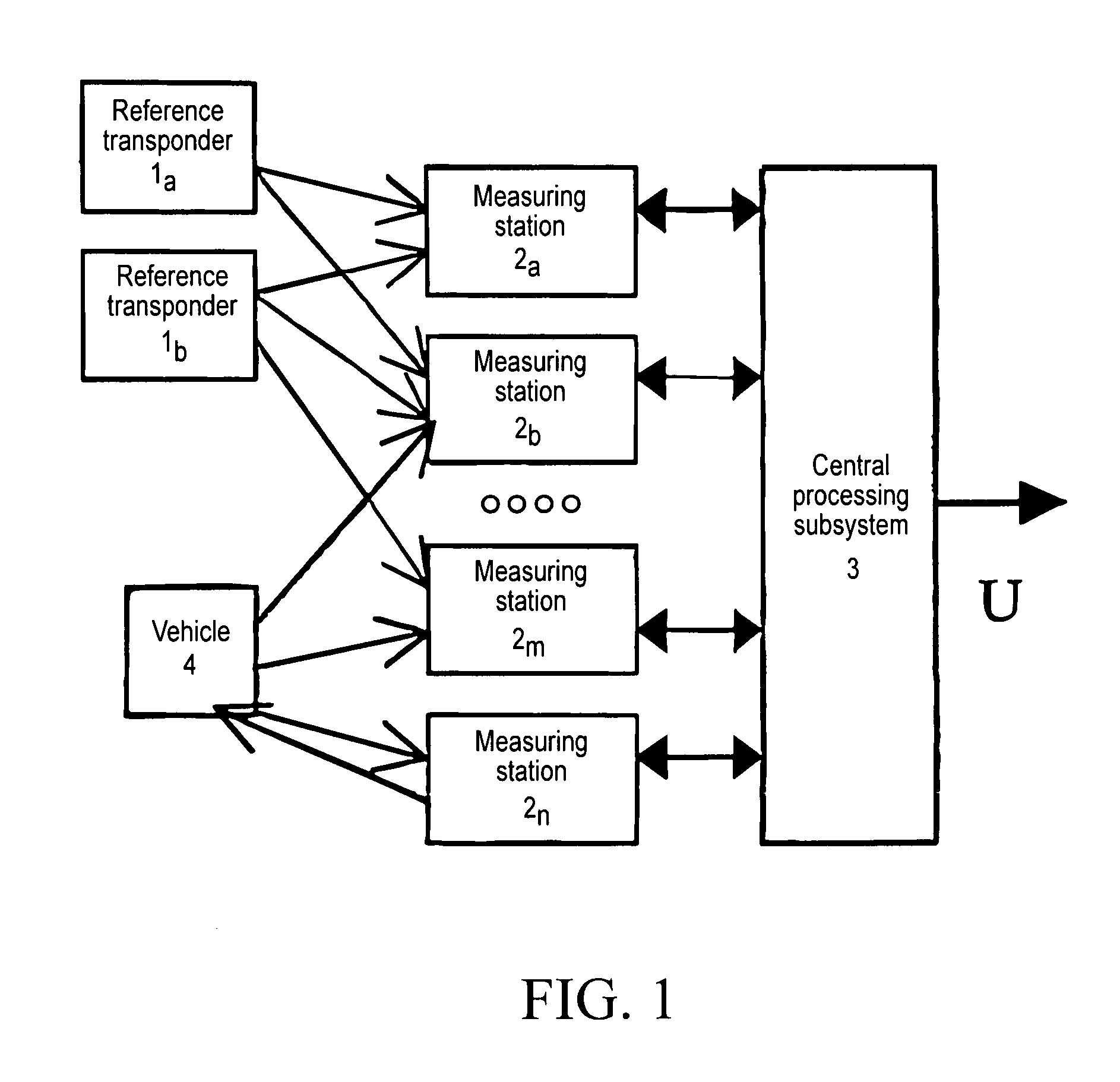High precision surveillance system by means of multilateration of secondary surveillance radar (SSR) signals
a secondary surveillance radar and high-precision technology, applied in the direction of reradiation/reflection, measurement devices, radio wave reradiation/reflection, etc., can solve the problem of less precise location than single measurements, geometric dilution of precision, and shift of clocks, so as to improve estimation and improve efficiency. , to achieve the present level of air transport safety, the effect of improving the estimation
- Summary
- Abstract
- Description
- Claims
- Application Information
AI Technical Summary
Benefits of technology
Problems solved by technology
Method used
Image
Examples
Embodiment Construction
[0041]This invention describes a System composed by various elements—as shown in FIG. 1—operating with reference to the techniques and principles above described:[0042]One or more reference Transponders able to emit standard SSR signals, according to a technique well-known in the field of air traffic control and airport surveillance, (see References [1] and [2]). These reference transponders are indicated with 1a and 1b and their typical number is two both for redundancy reasons, and for the necessity of having in optical visibility all the measuring Stations, that can be as many as fifteen. The reference Transponders are obtainable from the avionic ones in a simple way well-known to the experts.[0043]A certain number (greater than three and of the order about ten or twenty, according to the dimensions of the airport and its configuration) of measuring Stations, indicated with 2a, 2b . . . 2n in FIG. 1. Each Station receives both SSR signals emitted by the standard transponders on b...
PUM
 Login to View More
Login to View More Abstract
Description
Claims
Application Information
 Login to View More
Login to View More - R&D
- Intellectual Property
- Life Sciences
- Materials
- Tech Scout
- Unparalleled Data Quality
- Higher Quality Content
- 60% Fewer Hallucinations
Browse by: Latest US Patents, China's latest patents, Technical Efficacy Thesaurus, Application Domain, Technology Topic, Popular Technical Reports.
© 2025 PatSnap. All rights reserved.Legal|Privacy policy|Modern Slavery Act Transparency Statement|Sitemap|About US| Contact US: help@patsnap.com



